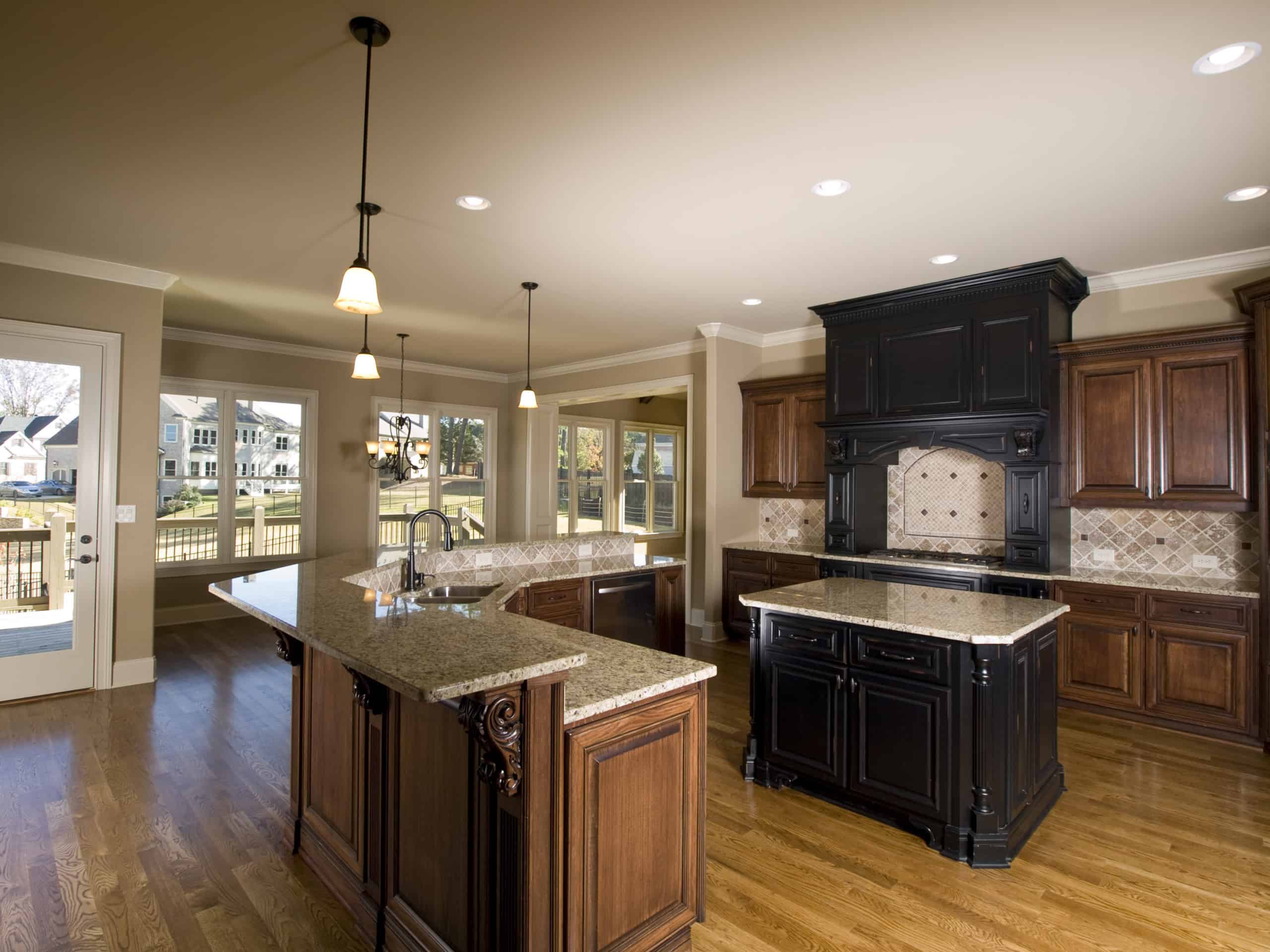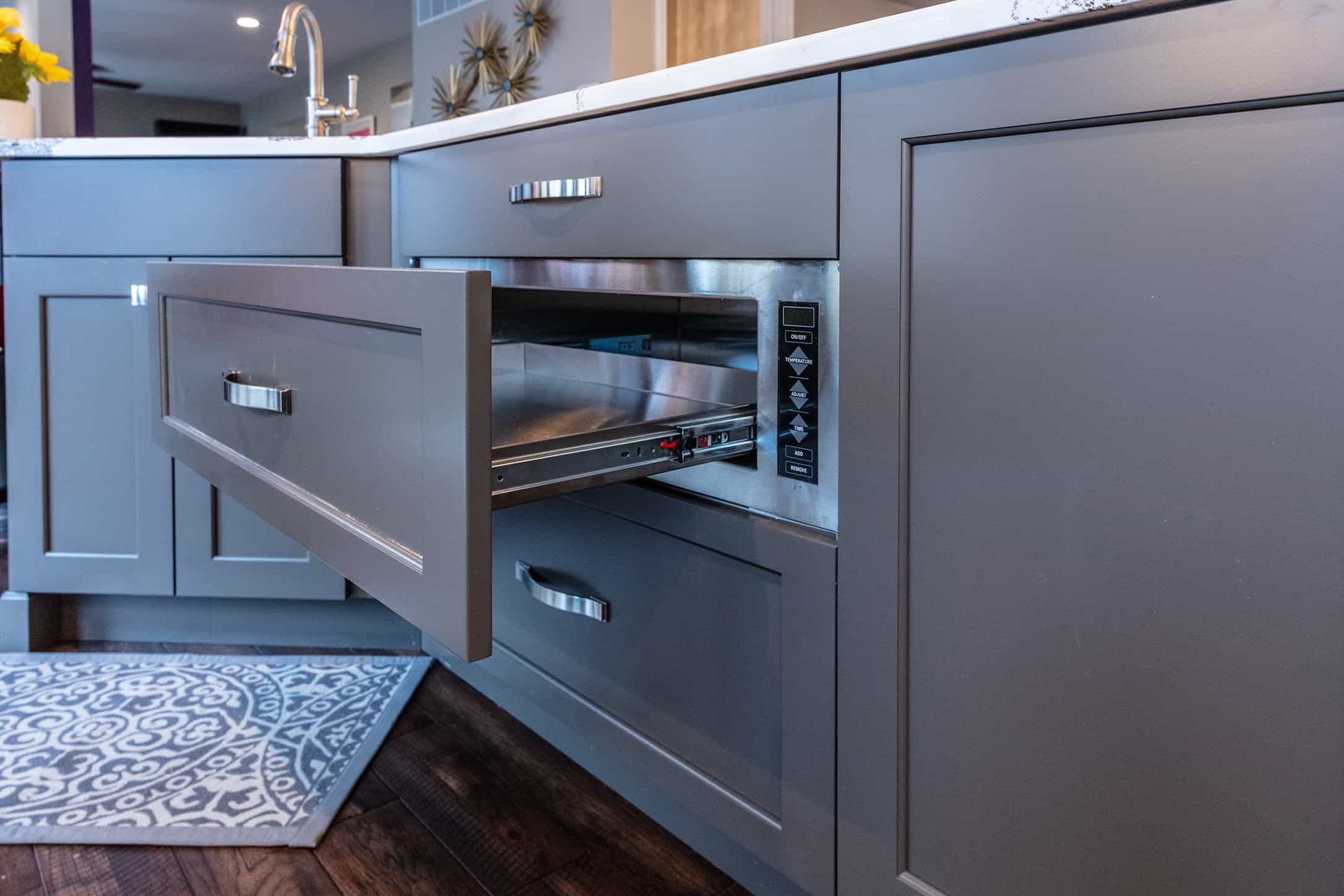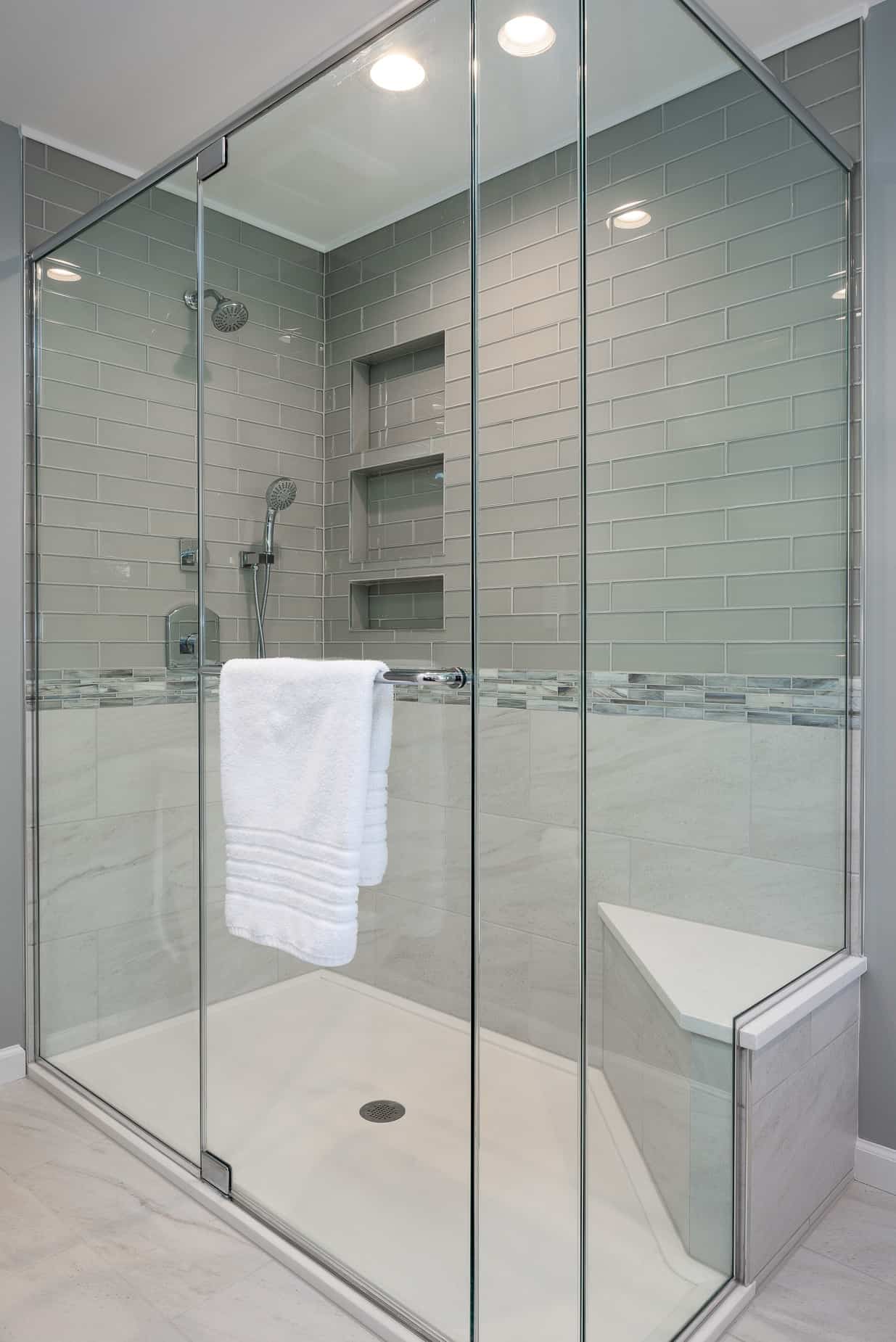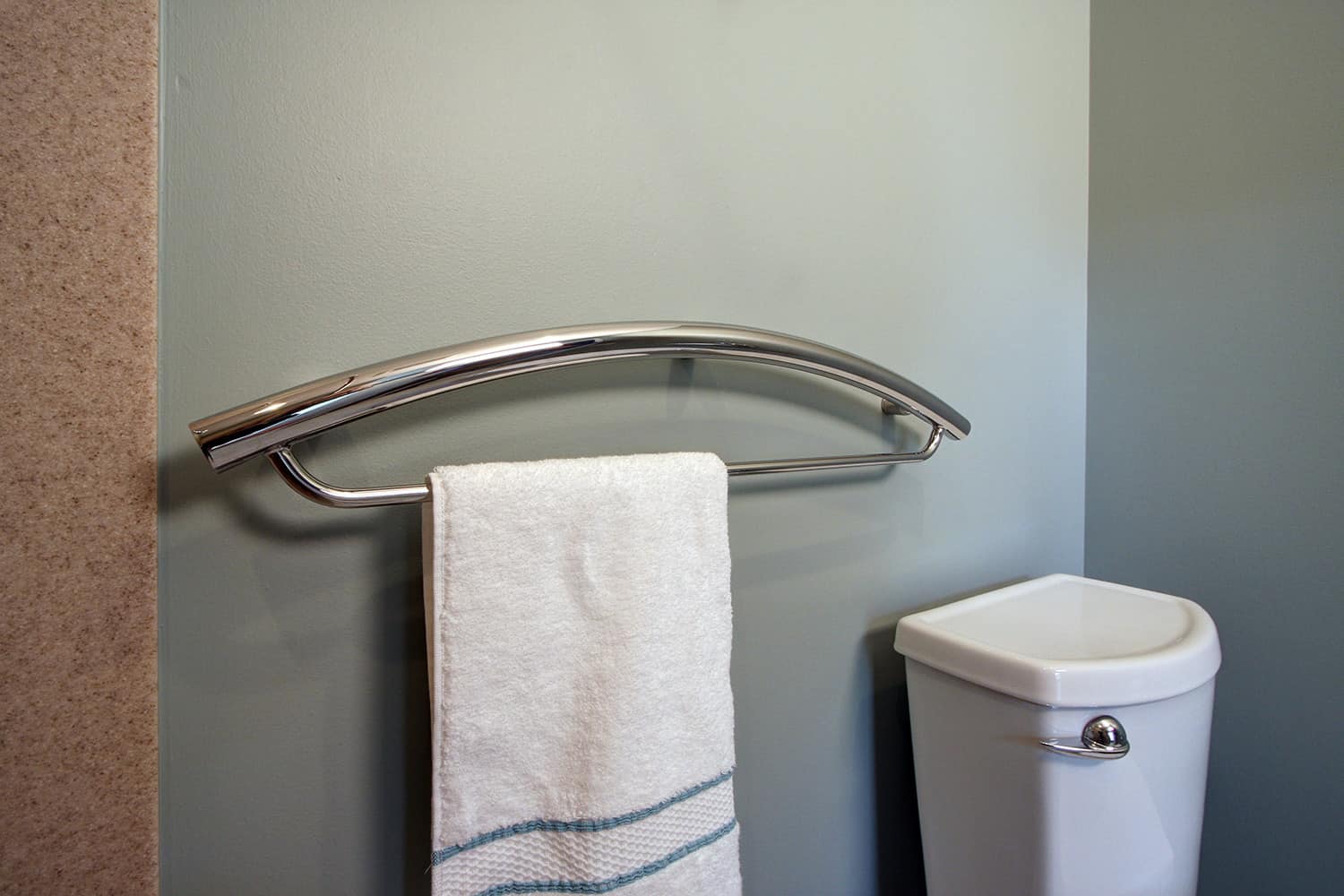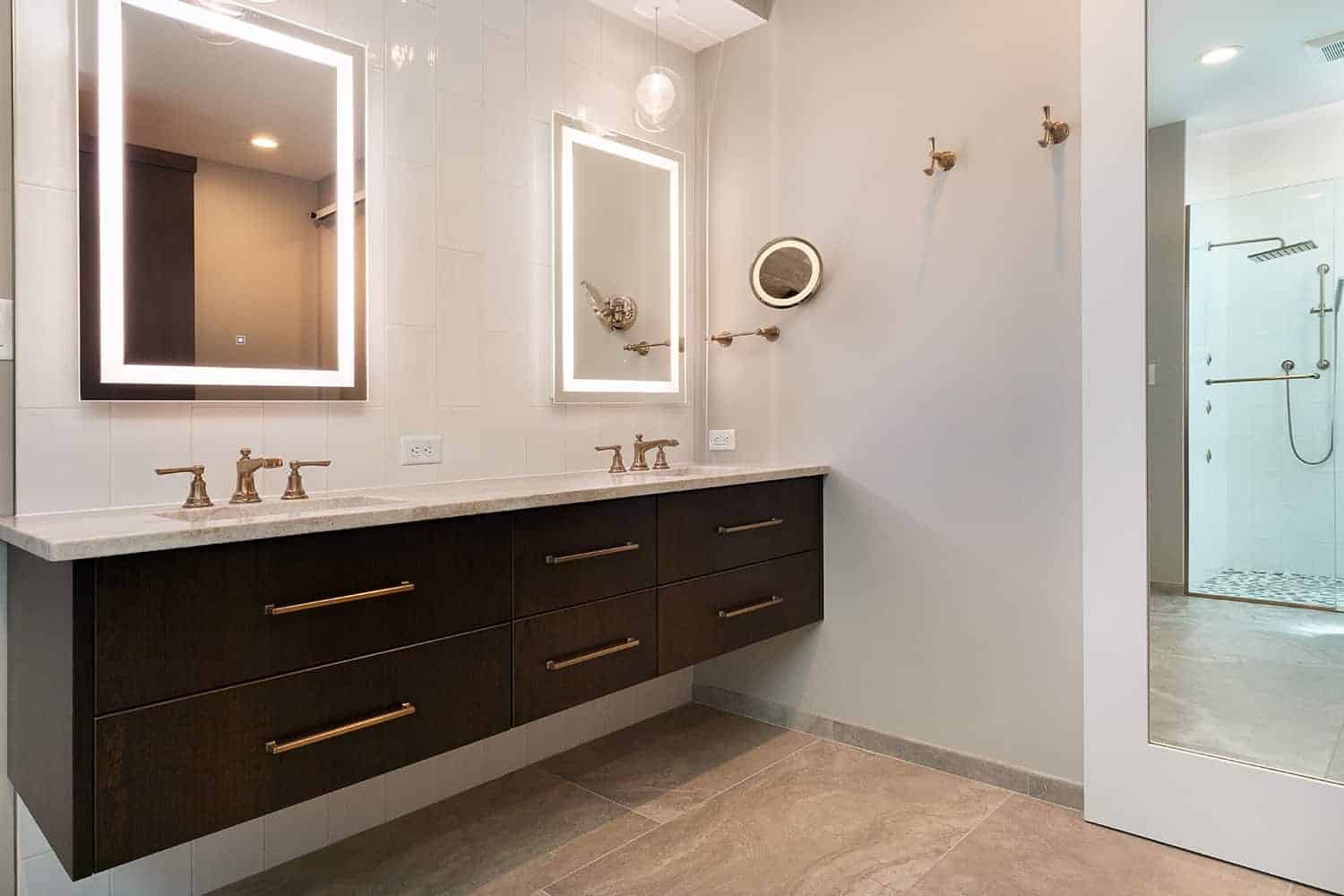Accessible Design: Where Functionality Meets Style
There are designers who specialize in accessibility, with the credentials of CAPS, Certified Aging-in-Place Specialists. These designers think outside of the box and do not let old stereotypes define their remodeling solutions. The improvements should be functional and practical first and foremost, because with products available nowadays they can also be sleek, stylish, and aesthetically beautiful as well.
Updates to the home that incorporate accessibility are available for the interior and exterior of the home.
Kitchen Options:
Multi-Level Kitchen Countertops
People spend a lot of time in their kitchen so it’s very important that products are easily accessible. For wheelchair accessibility, modifying an island to create more space for the chair to fit below the countertop can make it more functional. In that same realm, installing multi-level countertops designates prep spaces at a convenient height.
Accessible Microwave
Integrating a touch-control microwave into your lower kitchen cabinets is not only functional, but it frees up counter space for a less cluttered look overall.
Pull Up a Chair
A dining table with plenty of legroom below and ample space to navigate around ensures access for all without sacrificing style. This also applies to an island in a kitchen. By creating an overhang on the countertops, it will allow additional seating with an area underneath to accommodate a wheelchair.
Bathroom Options:
Walk-in or “Open” Shower
A walk-in shower without a door should be both functional and aesthetically pleasing. A walk-in shower has options for a low to no threshold, giving options to make it serviceable to the homeowner using a walker or wheelchair. For the shower floor, a smaller tile pattern with more grout lines creates a less slippery surface by giving more grip. There are many types of slip-resistant materials available to find the right fit for the homeowner.
Grab Bars
In terms of universal design, the first go-to are grab bars, typically installed in the Bathroom, but can also be a benefit in other areas of the home. Long gone are the days of grab bars having to look institutional. There are many options available nowadays that can complement the faucets or hardware in a space to be stylish and beautiful along with being functional. There are grab bars available that can also double as a towel bar or toilet paper holder.
Shower Seat
A bench in the shower is the perfect addition for all ages. Besides using it for seating, you can use it for storage or to prop your leg up while shaving. This bench has a contemporary, modern look and does not take up too much space in the shower.
Wall-Mounted Sinks
Sinks that are wall-mounted are easier to get up close to in order to use the faucet, making it a better solution for those in a wheelchair or walker. This wall-mounted sink is a great option because of the counter space that it also provides.
Tall Toilets
Choosing a taller height toilet where the seat height is 16 to 18 inches high, rather than the standard 14- or 15-inch high will make it easier to use. This is more comparable to a chair height and is more of a universal height for everyone in a household.
General Home Options:
Ramps + Rails
Designers can rework thresholds and small steps with gradual-incline ramps to make a smoother transition from one space to another. Adding handrails not only updates a space to be code compliant but also helps with stability or can accommodate a homeowner’s disability while also adding a decorative touch.
Seamless Transitions
With flooring, bulky or varied height thresholds can inhibit movement throughout different spaces. Where possible, lay flush flooring so that it flows seamlessly from room to room without the addition of thresholds or transition strips. Designers recommend defined differences in color and/or texture to indicate level changes in a home.
Go Doorless
A widened hallway with fewer barriers reduces the chance of falling or getting stuck. Designers can incorporate elements like wainscoting from the hall that continues into the bedroom for a seamless look.
Whatever your needs are when it comes to your home’s accessibility, Mosby Building Arts’ Certified Aging-in-Place Specialists can help design a stylish and functional space for you. To schedule a consultation, call us at 314-909-1800 or click here.




